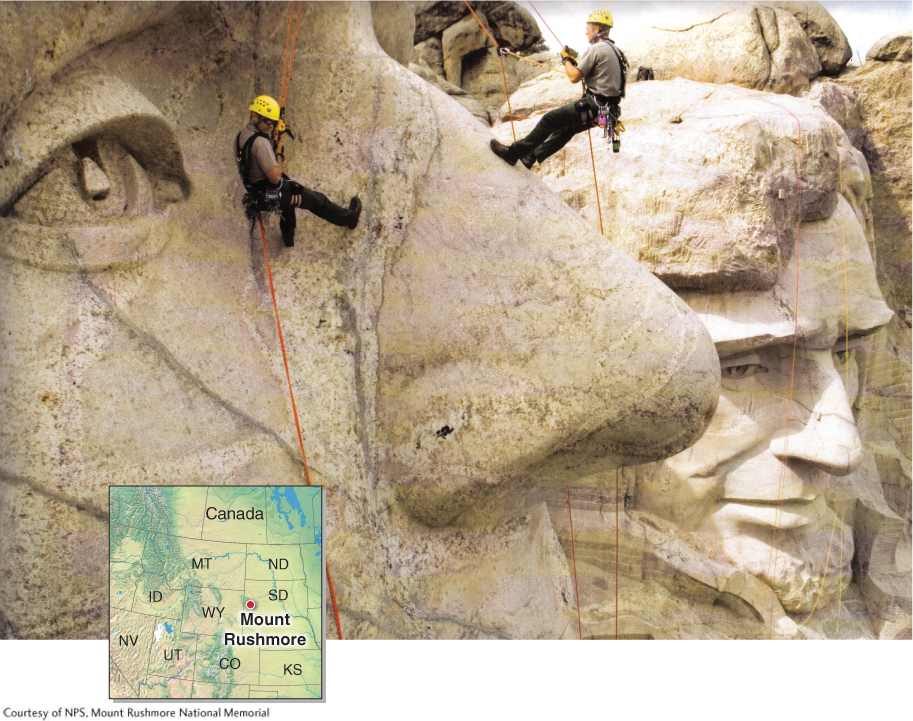Weathering and Mass Movement
15

LIVING PHYSICAL GEOGRAPHY
Where does beach sand come from?
Why are homes sometimes swallowed by the ground?
What is a disappearing stream?
Where are the highest sea cliffs in the world?
THE BIG PICTURE
Weathering reduces rocks to fragments. Gravity moves weathered material downslope, sometimes with deadly speed.
LEARNING GOALS
After reading this chapter, you will be able to:
15.1
Distinguish between physical weathering and chemical weathering and provide examples of each.
15.2
Describe different kinds of karst landforms and explain how each forms.
15.3
Identify different types of mass movements and describe their behavior and causes.
15.4
Assess the threats to people from mass movements and explain how their vulnerability to those threats can be reduced.
THE HUMAN SPHERE:
Weathering Mount Rushmore
THE MOUNT RUSHMORE NATIONAL MEMORIAL is carved from a body of granite in the Black Hills of South Dakota. Like any rock, the granite that makes up this monument is continually subject to the effects of weathering that break down rocks over time. The sculpted surface makes the rock more susceptible to weathering than it would otherwise be because there is a greater surface area on which weathering can act. To protect the monument from weathering, the U.S. National Park Service closely monitors and maintains its rock surface (Figure 15.1).

Scientists have also developed a system that identifies “rock blocks” that provide key support for large portions of the monument. If these blocks move, other portions of the monument would be more susceptible to movement as well. These key rock blocks are monitored by laser-
We begin this chapter with a focus on the different kinds of weathering processes that act on rocks and the effects of these processes. We then turn our attention to mass movement events, which range from imperceptible ground movements to dangerous avalanches. Lastly, we examine the hazards posed to people by mass movements.